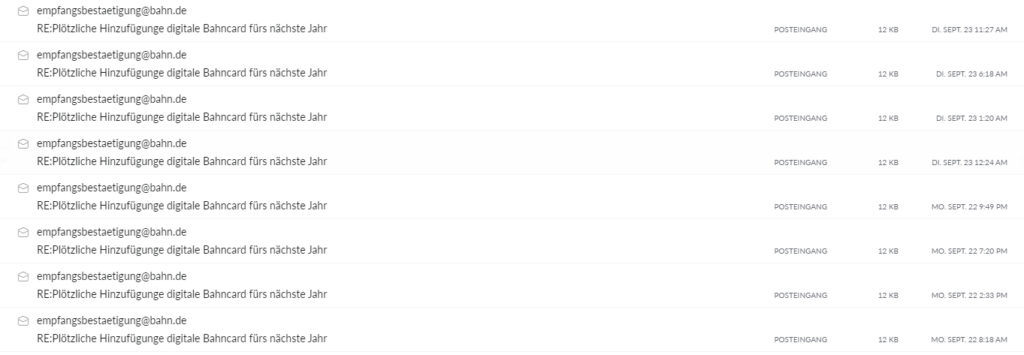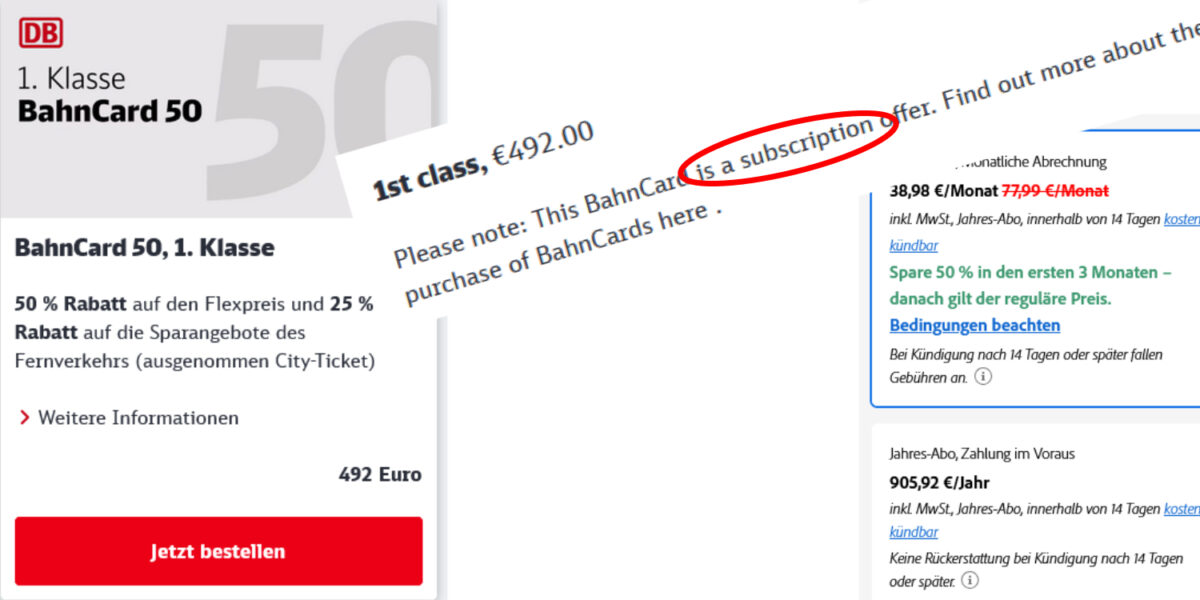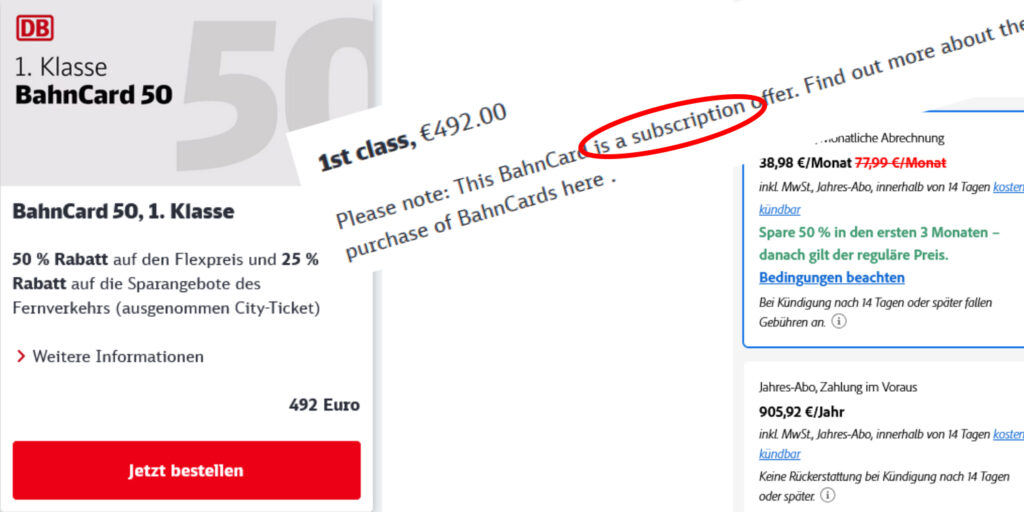
Deutsche Bahn, the fully state-owned railway company, is a well-liked company running most major long-distance railways in Germany. So, it will come as a surprise to many that I have some complaints about them. Today, however, I won’t talk about the numerous delays, cancellations and frankly bad service interactions I had with them in the past. Today is about dark patterns that cost me 500€ for nothing.
I apologise in advance for using mostly German material, as it is the primary language. I thought it wasimportant to use it. Also, DB manages to make the English part even worse by breaking their reference to additional material (see header image). Also, if your sarcasm detector is broken, you might have trouble with some sections.
A dark pattern is a design mechanism to get people to buy, do or allow things they don’t actually want. Examples include: Forced continuity of free trials with paid subscriptions, hiding the true costs of a service, and many, many more.
These are especially prevalent with subscriptions, so it might not come as a surprise that we will look at subscriptions today. At first, let’s look at two other well-liked and respected companies: Adobe and Deutsche Telekom. Both make use of subscriptions: One for an ongoing connection to the internet and one for software. This is how they are advertised on their website.
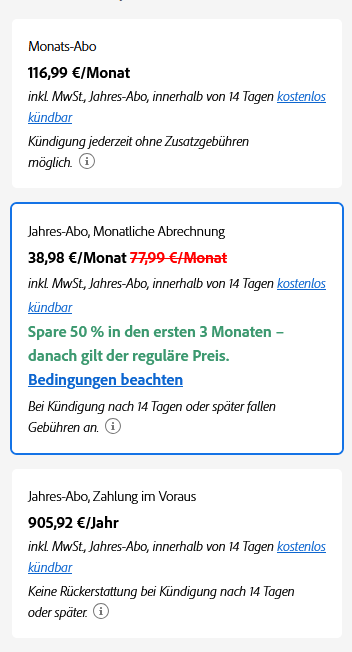
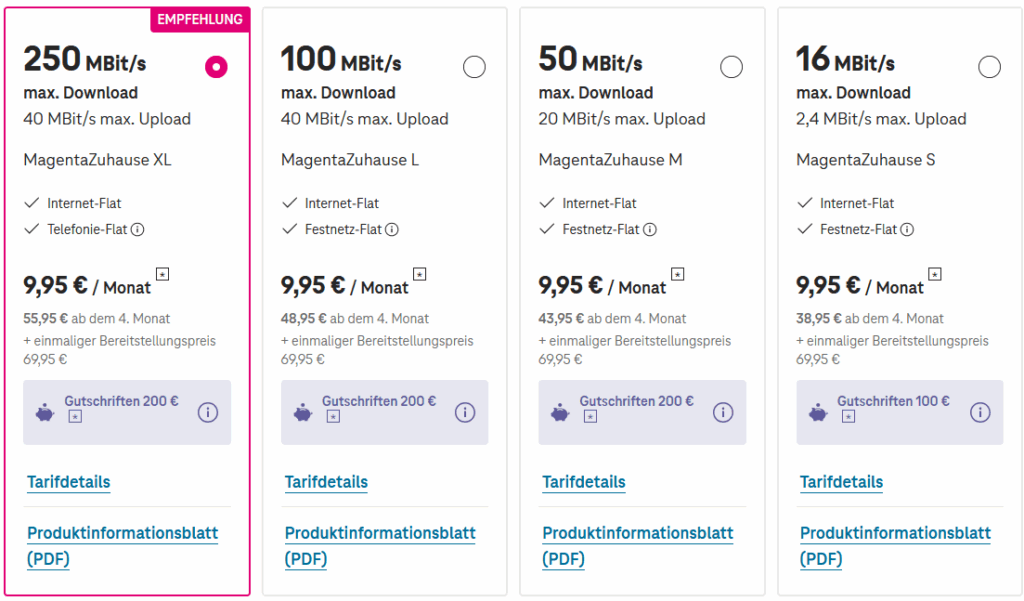
Both note prices in Currency Per Timeframe: €/month or €/year. Telekom even includes some discounts: 9.95€/month and in smaller font: 43.95€/month starting with the 4th month! Adobe clearly states they are selling a monthly subscription (“Monats-Abo”) or a yearly subscription, but paid monthly. There is no misunderstanding. (Note: Adobe is highly criticised for its subscription practices.)
Based on these examples, let’s see how Deutsche Bahn advertises their BahnCards. A BahnCard is a discount offer; it is not a product or service in itself, but rather allows you to get discounts. They exist on various levels: Normal and Business, 25/50/100, Probe or Normal, first or second class. I’ll limit this to the first class BahnCard 50, as that’s the one I got and the Probe version, which is only valid for 3-month period.
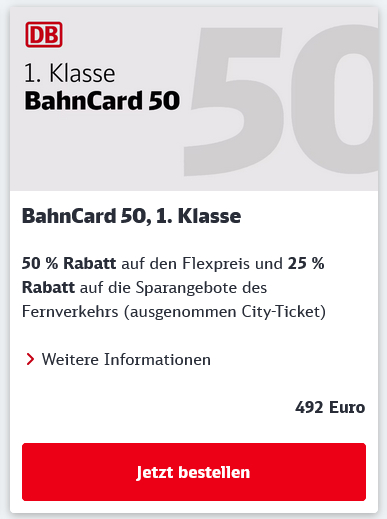
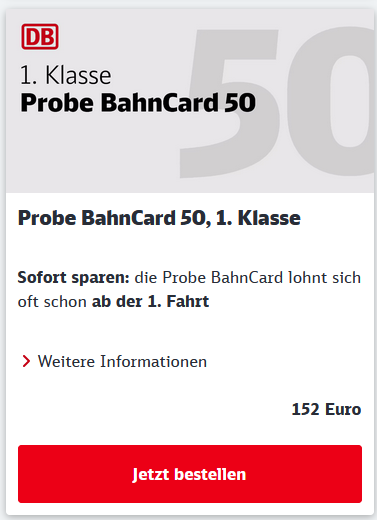
A Bahncard 50 gives you a 50% discount on regular fares (which are rarely paid by most casual users) and a 25% discount on discounted tickets. After using it for a year, I’d say it is a very bad deal for most casual travellers, but that’s beside the point. I bought mine on sale (50% off), but those are not available at the time of screenshotting.
The “weitere Informationen” link lets us see additional details about this order and an FAQ section with important information.
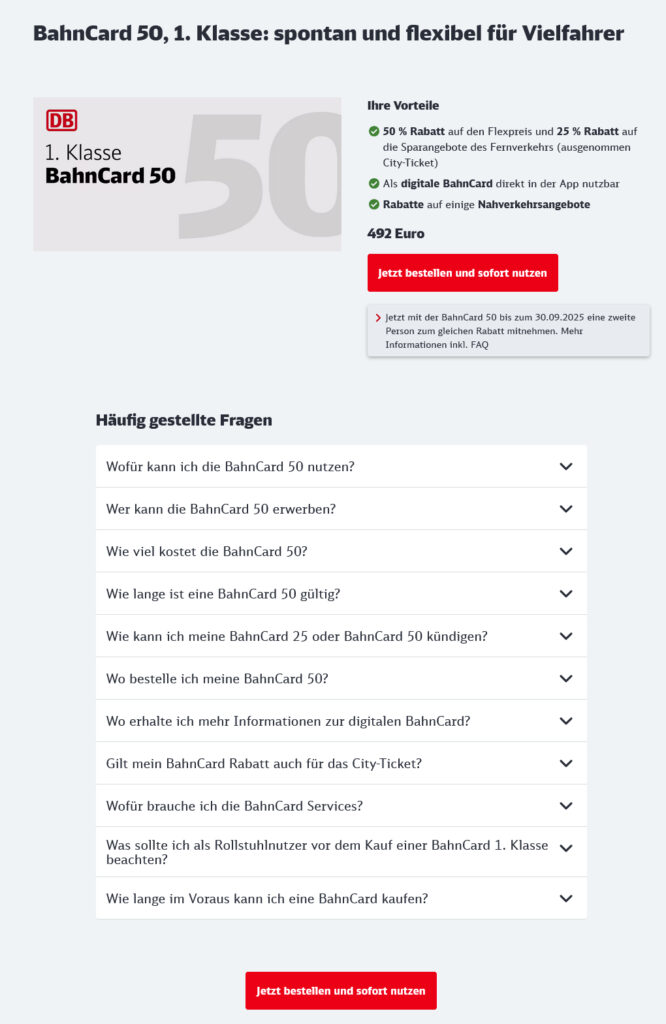
It even contains a neat question about the cost of the BahnCard 50! That’s nice. 492 Euro for the first-class card. We knew that, it was clearly advertised! Silly. We can even link to this section specifically.

So: Is this a subscription? Yes, of course it is! The Probe Bahncard page actually mentions this.
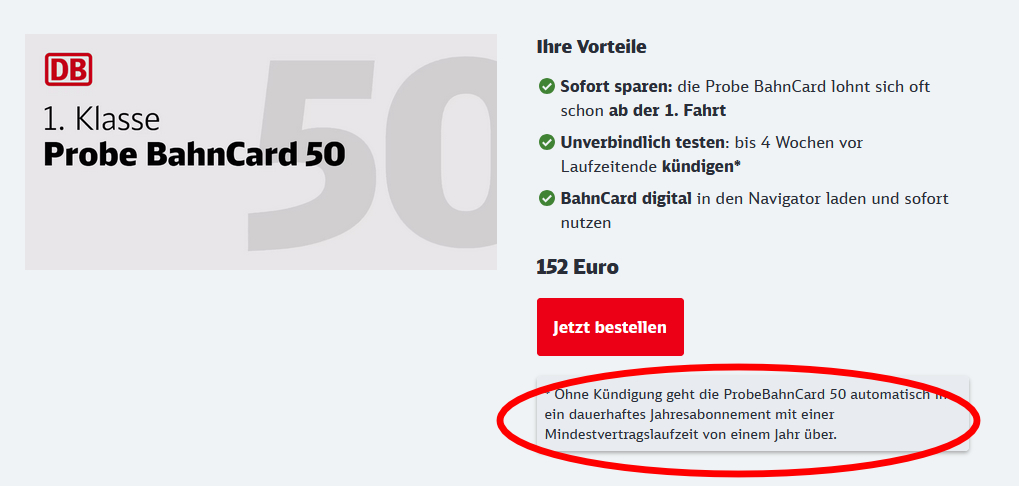
As well as the sales process, once you hit “jetzt bestellen” (buy now).
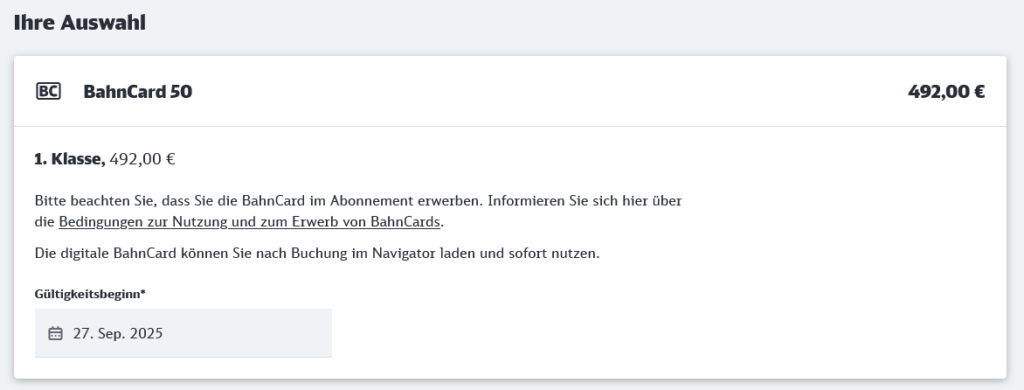
In case you missed it, it is the text in the centre of the screen, you won’t see the word “Abonnement” again. I used a fake account to generate some screenshots of the current sales process, but Deutsche Bahn changes it around every now and then, so neither can I be sure it looked like this when I bought my Bahncard, nor is it guaranteed to look like this when you go through the process.
I have some objections to the layout of this page. In my opinion, this text is designed to make people not take notice of the subscription. No mention of the timeframe or recurrent nature of the price. For completion: The probe Bahncard screen does not mention the price of the full Bahncard (492€) at all, only the probe price.
Let’s head on to the final sales screen; the intermediate screens only take in the user information and provide no additional information on the Bahncard.
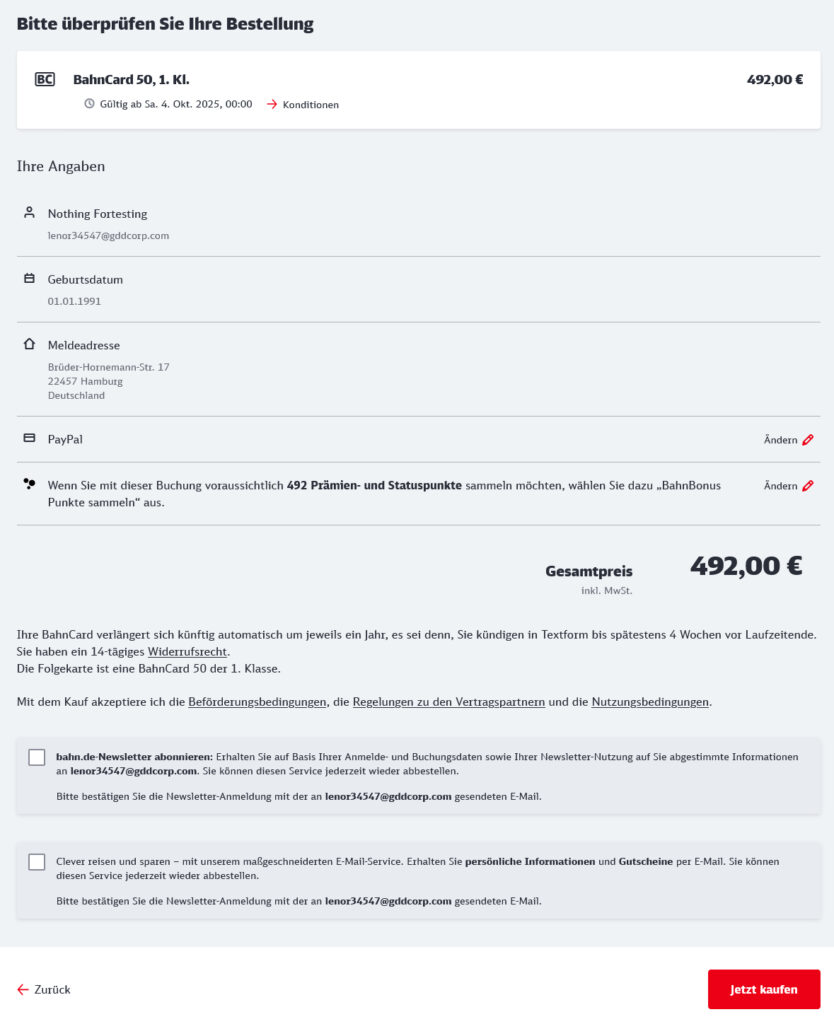
There is zero indication of the payments (the value of 492) being recurrent (“492.00€/year”); the probe version does not contain the price of the full Bahncard at all. The mention of the subscription does not use the word “Abonnement” (subscription) this time, instead says that it gets automatically extended by one year unless you cancel. It has no visual weight, unlike the “bahnde-Newsletter” abonnement (so if you ctrl+f “abo” you’ll end up in that section), and there is no option to not get the Bahncard as a non-subscription.
You buy the Bahncard and receive a confirmation email for your subscription. Although it does not contain the word Abonnement, any mention of renewal, the price of the subscription (only the reduced price of the sale in my case) or any indication of cancellation. You also receive a welcome email, letting you know about the advantages of your Bahncard, which, again, contains no information about cancellation, renewal, subscription, or prices.
You Now Have A Subscripton. How Can You Tell?
Congratulations, you bought a Bahncard subscription. You used it for a while and decided it is not worth the cost. You don’t remember getting a subscription, but you want to make sure! Unfortunately, you don’t try the obvious thing, but make the mistake of checking your actual account at Deutsche Bahn. So, where to search for the subscription?
Deutsche Bahn thought about that! They have a subscription portal called Aboportal. It is clearly labelled in the account menu, right next to the Bahncard option! Amazing. Here’s what it looks like for me right now:
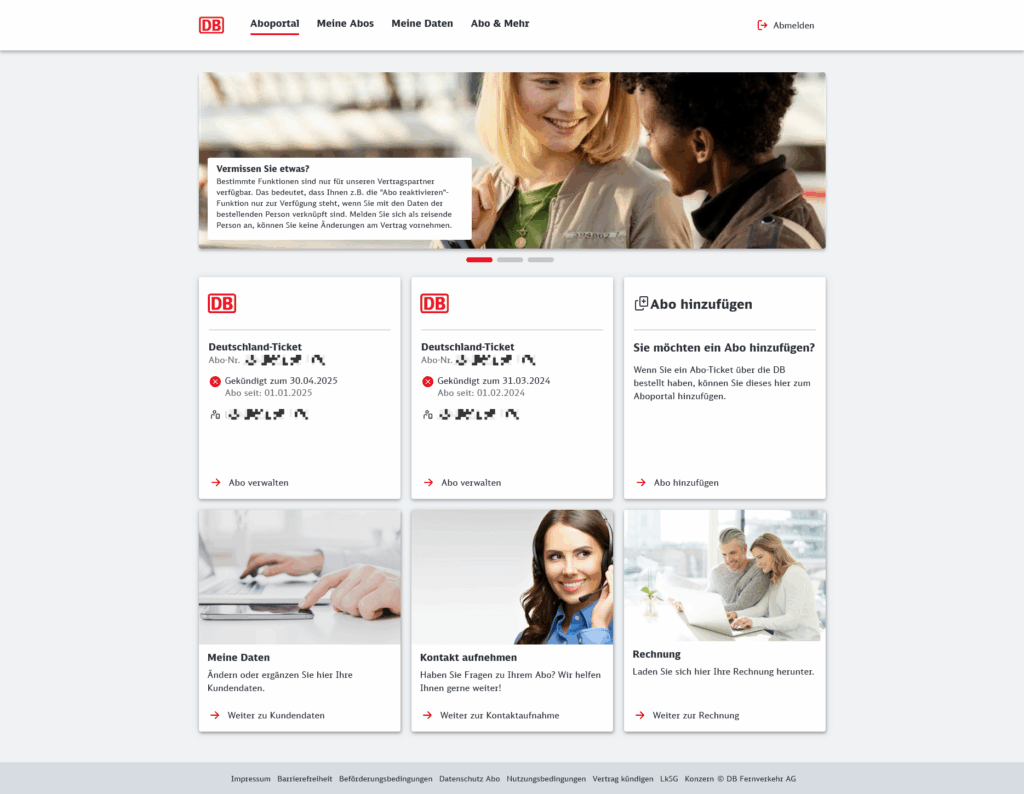
I had two subscriptions in the past for Deutschland-Tickets; they were cancelled long ago, and they still show up. They have a lot of space for additional menu items; it seems they don’t believe in separating functions or user-friendly design — that’s just my opinion. No Bahncard subscription, though. I would not fault you for believing you do not have a subscription active after this screen and just quitting, but let’s try more.
So it has to be in the Bahncard section. Here are two entries, one is my extended Bahncard I never wanted, and one is my Bahncard Business that, fortunately, my company provides. Can you tell if, and which, is a subscription?
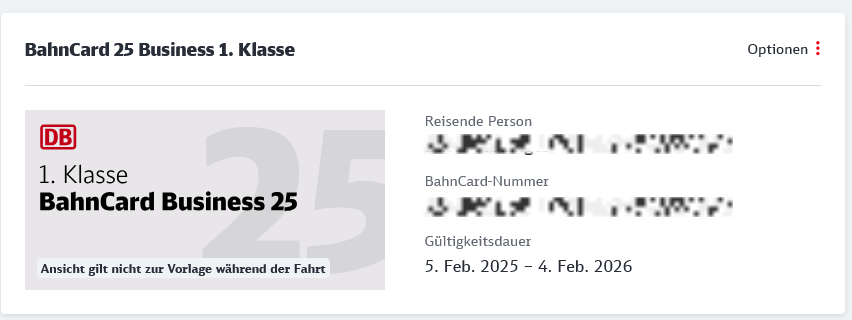
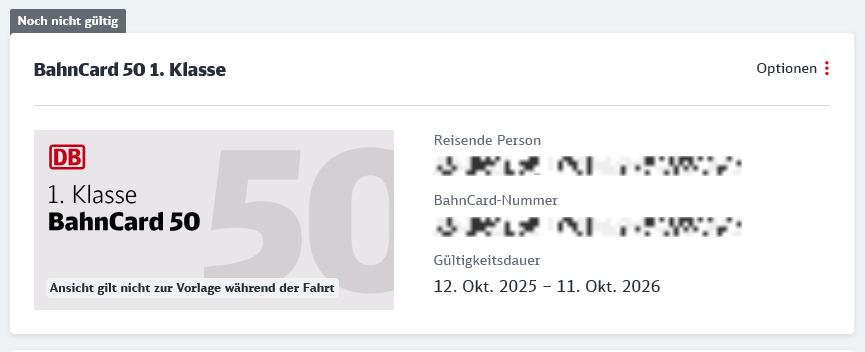
It’s very obvious if you know what you need to look out for. If you hit the “options” selector, there will be a third entry saying “Cancel Subscription” for a subscription. Also, Bahncard Business is not available as a subscription, so it can’t be one.
Lastly, when are you informed of the renewal? The cancellation time is 4 weeks before the end of validity. 21 days, or three weeks, before renewal, you will receive a notification for your new bahncard. It is too late now. You are stuck with it for another year.
If you cancel instantly anyway, you will receive an automated cancellation reply with the following neat sentence:
Ihrem Wunschtermin können wir leider nicht entsprechen, da eine Kündigung nur bis spätestens vier Wochen vor Ende der Laufzeit möglich ist. Dafür bitten wir um Verständnis.
Automated DB Email for cancellation
Translation: “Unfortunately, we cannot accommodate your requested date, as termination is only possible up to four weeks before the end of the term. We apologise for any inconvenience.” Deutsche Bahn has fully incorporated the subscription trap into the response. They are aware of it, they know you do not want it, and they let you know: They will not cancel.
Contacting Deutsche Bahn Support
If you are remotely acquainted with German support standards, you can probably skip this section. Deutsche Bahn has no intention of providing any form of good support.
First, you’ll have trouble finding a way to contact them, that is, not by phone (or in person). After some searching, you’ll find a contact form linked in some places that does not work. In the end, I managed to get a response from this email address: bahncard-service@bahn.de
I sent them a message about how I tried to figure out that I have a subscription recently and did not find anything, and how I never wanted this renewal, how I was never informed of the increased cost (as I bought it on sale). To prevent any misinformation about my email, here is the translated original:
Last year, I purchased a Bahncard as part of a special offer.
A few weeks ago, I checked to see if I could find any information about a subscription, as I don’t want another Bahncard—I only needed it for one year.
I couldn’t find any information in my original confirmation email or on the website, and the subscription portal doesn’t list it either.Today, I suddenly received a message saying that I will receive a new Bahncard in three weeks.
I canceled it immediately online, but unfortunately I was told that it was too late and that I should have done so at least four weeks before the expiration date.
The only email with the words “subscription” and “Bahncard” is the new Bahncard email.
Furthermore, the email does not contain any information about any costs associated with the Bahncard.???
Translation of my email to the support.
As far as I can tell, I received a standardised response. You can find the translated version here:
Thank you for your email dated September 21, 2025.
For all offers on www.bahn.de, the contract is only concluded at the end of the booking process.
Before completing your purchase, we will inform you about the terms and conditions for purchasing and using the BahnCard.
You acknowledged this directly during the online booking process and accepted it by clicking “Buy now.”
From October 1 to October 13, 2024, the BahnCard 50 was available at a discounted price.
After that, the BahnCard will be converted into a regular subscription.
We regret that you disagree with our decision to cancel your BahnCard.
The BahnCard subscription can be canceled annually up to four weeks before the end of the validity period. The date of receipt of the cancellation by BahnCard Service is decisive.
We ask for your understanding that we are sticking to our decision.
We have still scheduled the cancellation of your BahnCard **** for **. **** 2026.
Translated with DeepL.com (free version)
Translation of the support email.
Another back and forth led to the same result. This problem is common enough that a lawyer put out a default letter template for refusing, which I used for my second letter. It comes up on Reddit frequently, although I do not understand the people who defend this.
As far as I can tell, the previous attempts by Verbraucherschutz to sue Deutsche Bahn over this were unsuccessful. The layman’s summary I got from this court decision: As the Bahncard is a discount card and not a subscription to a product or service itself, it does not fall under the consumer protections that the Verbraucherschutz sued over.
Deutsche Bahn: No Reputation To Lose
The Deutsche Bahn has no reputation they lose. The discourse is dominated by their terrible service, delays and cancellations. They have no incentive, as a company, to improve other sections like the Bahncard sales tactics. They, as a company, have nothing to lose.
We as a society have a lot to lose. Deutsche Bahn is 100% owned by the state of Germany. We consumers do not cleanly separate companies from their owners. Many even think of Deutsche Bahn as a state company. Feeling cheated by your government is not good.
Further, Deutsche Bahn is a core infrastructure company for more eco-friendly transportation. Driving people, like me, away from using the Bahn is bad in so many ways. I have a high desire for fairness; if I feel cheated, I’d rather take a higher loss to myself than support the person or company that cheated me. However, I have little recourse in this whole debacle, but I’d rather drive my car more, or even rent one, than use Deutsche Bahn… and I really like taking trains. I love being lazy while the landscapes fly by instead of focusing on the road and getting annoyed at other drivers. All this, despite not a single one of my ~20 train journeys the last year being on time, and a dozen of them not even honouring my reservations, being overrun or flat out cancelled. None of that made me quit taking the train. Feeling cheated by Deutsche Bahn sure does.
This post was written as anger management. This whole desaster of communcation, despite “only” being 500€, cost me so much productivity, motivation and more. I hate dealing with these kind of things. It followed me around all day, made me lose sleep, just because it annoyed me so much. Now I feel better. So for some fun: My first email to Deutsche Bahn netted me 8 recipient confirmation emails by deutsche Bahn, neatly spaced by around 3 hours each. Then they took 2 days to respond to my first email. For the second email I received only 1 confirmation, but got to wait 15 days for a response.
